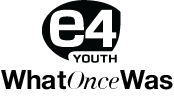Interview Highlights
The racial diversity of East Austin
“This East Austin was wholesome. It was just well integrated with beautiful people.
The blacks and Hispanics had a loving environment. We were united. We had no racial problems between us. None whatsoever. Mothers would share recipes and beautiful foods, and we’d have little decorative parties together in the streets and stuff. And they were really united. The mothers united the neighborhood.”
Civil rights and Rogers Washington Holy Cross
“I was 13 and we had started going to white schools. When we moved over there [Rogers Washington Holy Cross], we moved in the summer, we had not started school yet, and there was a skating rink that opened up in our neighborhood down the street on Airport and Manor Road.
I don’t remember the name of it, but they had a big sign up there. We went to go skating and it said “no blacks allowed.” And the reason why I’m bringing up this issue, this is what catapulted our civil rights movement. This just started dominoing and one civil rights march led to another civil rights led.
We had the most peaceful marches. We never had any problems with the police, never. My mother led the marches, she and NAACP President Volma Overton and my dad. And our neighborhood, Rogers Washington Holy Cross, we were the first civil rights leaders in that whole area. That’s how mother and all of the mothers in that area, we all got together. We had unity. It was unbelievable.”
The close kinship of Rogers Washington Holy Cross
“We were family. Everybody knew how old each other was. Everybody knew whose birthday it was.
Everyone knew when somebody was sick, if somebody got sick, they all united. In the old days, when somebody passed away in your family, everybody, the women would cook and they would take food over to the bereaved family. They didn’t have to cook for at least a week or two, especially during the duration of the funeral preparation they would take food.
I’m talking about unity. I’m talking about unity in a family way. Create a family environment.”
The historical people that lived in Rogers Washington
“We had Mr. Poole in our neighborhood. Our Poole – school teacher. Also a cowboy. He had the prettiest, most beautiful white horse called Playboy. Mr. Poole rode Playboy down Congress Avenue and led in the 4th of July parade. First black cowboy.
Tuskegee airman, Mr. Norman came from our neighborhood. Mr. Poole came from our neighborhood. John King was one of the first black three star generals in the United States, Stewart King’s father.
We have a lot of historical people. Stella Banks that lived on the corner. She used to sing jazz in Hollywood and wrote music for Duke Ellington and Count Basie, best friends with Billie Holiday and Sarah Vaughan.”
What Rogers Washington can teach current generations
“[Rogers Washington Holy Cross] is like a giant door that stays open. It stays open for young people like yourself, who need to go in there and reap the benefits of the knowledge and the beautiful work that the leaders, the old leaders, left behind.
It’s still there. Anything you want to learn is still there. They made sure that they left behind all of the trails of their work in the library, through the memories of people like Jan and her sweet family and her friends, and Brenda Malik and her family.
And they’re still people there. Ida Dawne Thompson, who lived next door to our family, her father – Oscar Thompson – was the first black biology instructor at University of Texas. But there’s so many of us, children, some of the grandchildren, and even it doesn’t necessarily have to be carried on by the grandchildren. It just needs to be there in memory of the old leaders and what they stood for.
Take that and run. You need to live on their courage. You need to understand that they weren’t afraid when they marched, when they took on a great battle of racial discrimination and segregation, they weren’t afraid. They moved in faith.”
